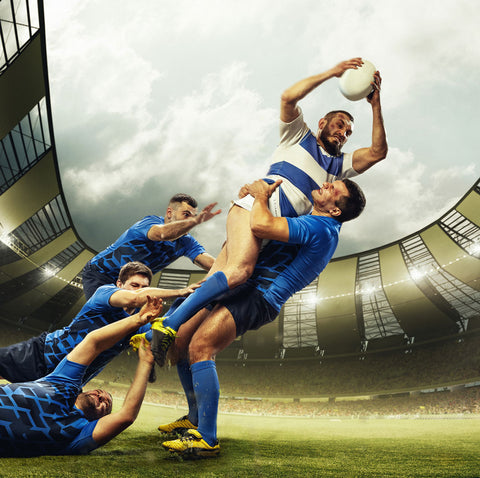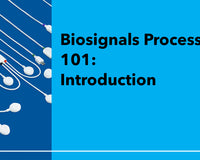The grand finale of the Rugby World Cup 2023 is nearing, and with rugby fever spreading, it's the perfect time to explore the fusion of sports, healing, and technology. The way the human body moves and interacts on the rugby field opens up a world filled with exciting discoveries. All around the world, researchers with state-of-the-art gadgets are on a quest to uncover secrets that can boost player performance, lower the chances of getting hurt, and speed up recovery from inevitable injuries. In this post, we'll dive into a series of outstanding projects powered by these gadgets that are changing the way we look at sports science.
Understanding Injury Risks
Bart van Trigt and his team at the University of Delft undertook a study to delve deeper into this issue. They used Electromyography (EMG) sensors to explore the impact of extensive pitching on the elbow and its surrounding muscles. Their findings provide a metaphorical explanation - understanding why bending a twig too far ultimately leads to its breakage. Through their research, they discovered that the muscles around the elbow strive hard to protect it, though sometimes, their efforts aren’t enough.
Interestingly, their detailed analysis did not show a clear link between frequent pitching and resultant elbow or muscle problems. However, they unearthed a noteworthy point – the experiences of different pitchers varied significantly. Just as individuals differ in how much they can bend a twig before it breaks, pitchers showed diverse responses to the demands of extensive throwing.
This discovery highlights a crucial concept - individual differences play a significant role. It emphasizes the need to understand the unique characteristics of each player when designing training plans to mitigate injury risk factors. This notion isn’t just limited to baseball; it holds a mirror to rugby training as well. By understanding the mechanics of throwing in baseball, rugby coaches and players can glean insights to adjust training regimens, better preparing athletes for the physical demands of rugby, and reducing the risk of injury.
The findings from this baseball research project resonate well with the rugby community, especially as players and coaches seek to enhance performance while minimizing injury risks. By applying the knowledge from baseball’s pitching mechanics to rugby’s throwing techniques, there might be an opportunity to foster a safer and more effective training environment.
You can dive deeper into this research project here and check out the researcher's YouTube video for more insights into the topic.
🏉 Explore our sensors to capture data about how a person is moving or behaving, such as Accelerometers, Goniometers or Electromyography (EMG).
Bringing Tech to the Tackle: Real-Time Movement Analysis for Rugby Excellence
In the high-octane realm of rugby, understanding players' movements and actions in real-time is not a luxury, but a necessity for staying ahead in the game. As the Rugby World Cup 2023 unfolds, the importance of technology in enhancing performance and reducing injury risks cannot be overstated. Human Activity Recognition (HAR) systems stand at the forefront of this technological innovation, offering a lens through which to analyze and understand human movements as they occur.

Although HAR systems have made significant strides, much of the focus has been on offline models which analyze data post-event. The real treasure, however, lies in capturing and interpreting data in real-time, allowing for immediate insights and action. Yet, the shift from offline to real-time models has its share of hurdles and has remained largely uncharted territory.
A pioneering study led by Hui Liu and his team at the University of Bremen has taken a deep dive into this realm, sharing their extensive experience in developing real-time HAR systems. They meticulously outlined the building blocks required for these systems, covering a wide range of aspects from hardware necessities and software development to data collection and biosignal processing. The crux of their project was the transition from offline to real-time models, a shift that demanded careful consideration of factors like window length, overlap ratio, sensor choices, and feature selection to ensure successful real-time functionality.
One of the highlight offerings from this research is a user-friendly interface that enables on-the-fly functionality, displaying both raw data and extracted features in real-time. This is a step towards making real-time HAR systems more accessible and usable in practical scenarios.
Designing such real-time systems is indeed a complex endeavor. Finding the right software architecture that can handle real-time data acquisition, processing, and visualization while meeting performance expectations is a tall order. Through their research, the team has shed light on evaluating real-time HAR systems and provided insights on enhancing the performance of wearable-based HARs.
The ripple effects of this project extend beyond just the academic and tech communities. It bridges the theoretical with the practical, providing a pathway for those in the rugby world to harness real-time data for better performance and safety on the field.
As rugby teams gear up for the thrilling Rugby World Cup 2023 finals, the insights from this project open a window to a new realm of possibilities. By embracing real-time HAR systems, rugby teams can elevate their game, making informed decisions swiftly, and ultimately, aiming for triumph in the fiercely competitive arena of international rugby.
To go deeper into this groundbreaking project and explore the blueprint for designing real-time HAR systems, check out the full research paper here.
📣 Explore our Biosignals Kits today!
Unveiling Yoga’s Potential in Rugby Players' Balance and Coordination
Research doesn't always provide clear-cut answers, but it often paves the way to exciting new explorations. This is precisely the case in a study carried out by Sara Santos and her team from the Universidade of Évora, Portugal, which examined how a 12-week yoga program could impact postural control and coordination among healthy military student pilots. While this study was set in the aviation domain, the findings echo a potential crossover into the rugby field, especially as we approach the climactic Rugby World Cup 2023 Finals.

In aviation, keeping a steady posture and having precise control are crucial, much like in rugby where balance and coordination are key to a player’s performance on the field. Santos's study focused on Ashtanga Vinyasa Yoga Supta, a yoga style that emphasizes the synergy between breath and movement through a structured sequence of poses.
The study divided 18 student pilots from the Portuguese Air Force Academy into two groups. One group participated in yoga classes (the intervention group), while the other waited (the control group). Both groups went through a flight emergency protocol in a simulator, with their postural control measured before and after this intense experience using a biosignalsplux Force Platform to track Center of Pressure (CoP) displacement.
The outcome was thought-provoking. The yoga group showcased steadier CoP displacement both before and after the flight simulation, hinting at yoga's positive impact on postural control. Although the study was not conclusive, it uncovers an intriguing link between yoga practice and improved balance and coordination.
Translating this to the rugby realm, there's a compelling narrative awaiting exploration. Could a disciplined yoga routine help rugby players enhance their balance, coordination, and overall performance on the field? As rugby players endure rigorous training and high-impact gameplay, integrating yoga could potentially provide a novel pathway to better performance and injury prevention.
As the Rugby World Cup 2023 Finals loom, the idea of incorporating yoga to boost players’ balance and coordination is a narrative worth exploring. It's an exciting proposition that could reshape training regimens and elevate the game to new heights.

credits: Eurosport
For those intrigued by the potential overlap of yoga benefits from the cockpit to the rugby field, diving into Sara Santos’s full research a recommended next step.
Conclusion
As the Rugby World Cup 2023 Finals draw near, the fusion of sports, technology, and innovative research paves the way for new horizons. The insights garnered from baseball pitching, real-time movement analysis, and yoga's balancing act offer a glimpse into a future where enhanced performance and injury prevention in rugby and beyond are within reach. These diverse studies invite us to envision a realm where the rigors of the rugby field meet the cutting edge of technology, opening doors to new discoveries that resonate far beyond the roar of the crowd.










